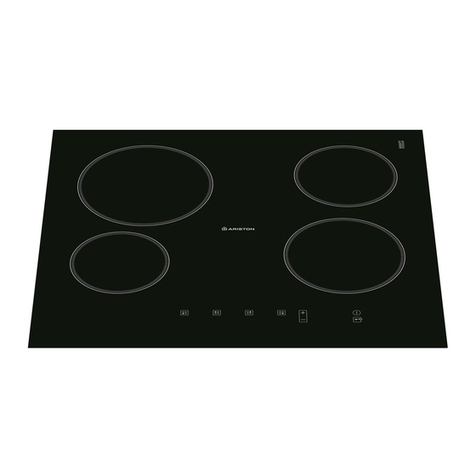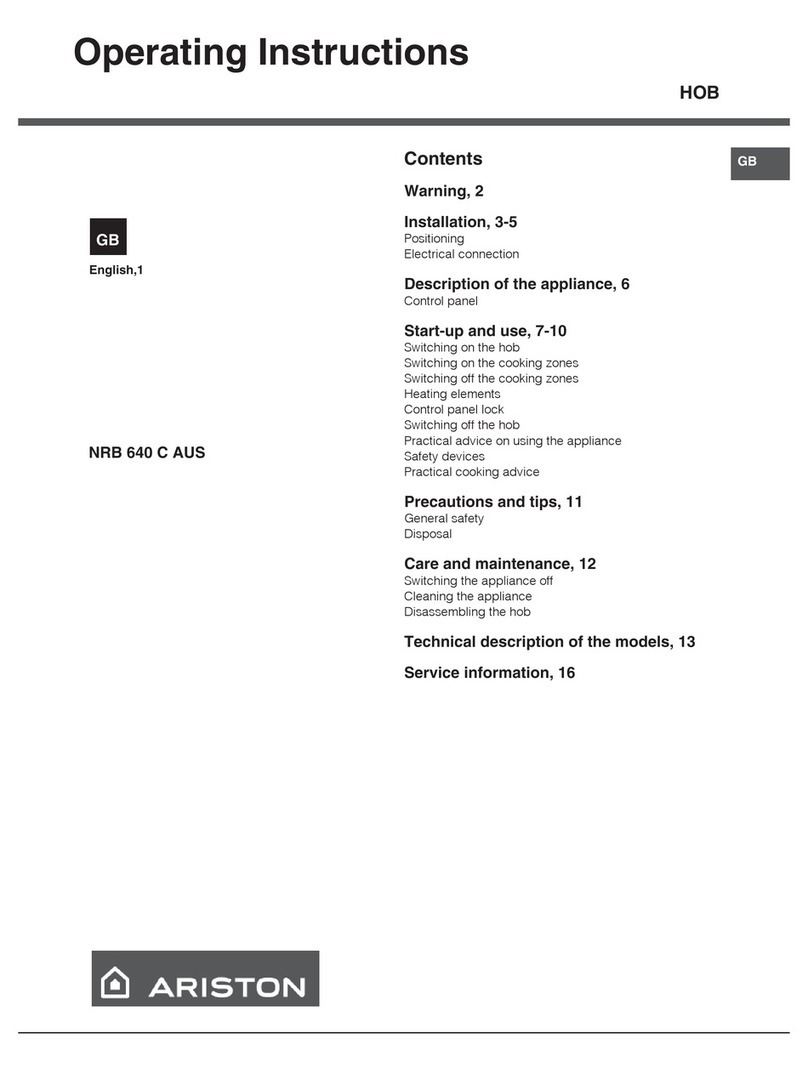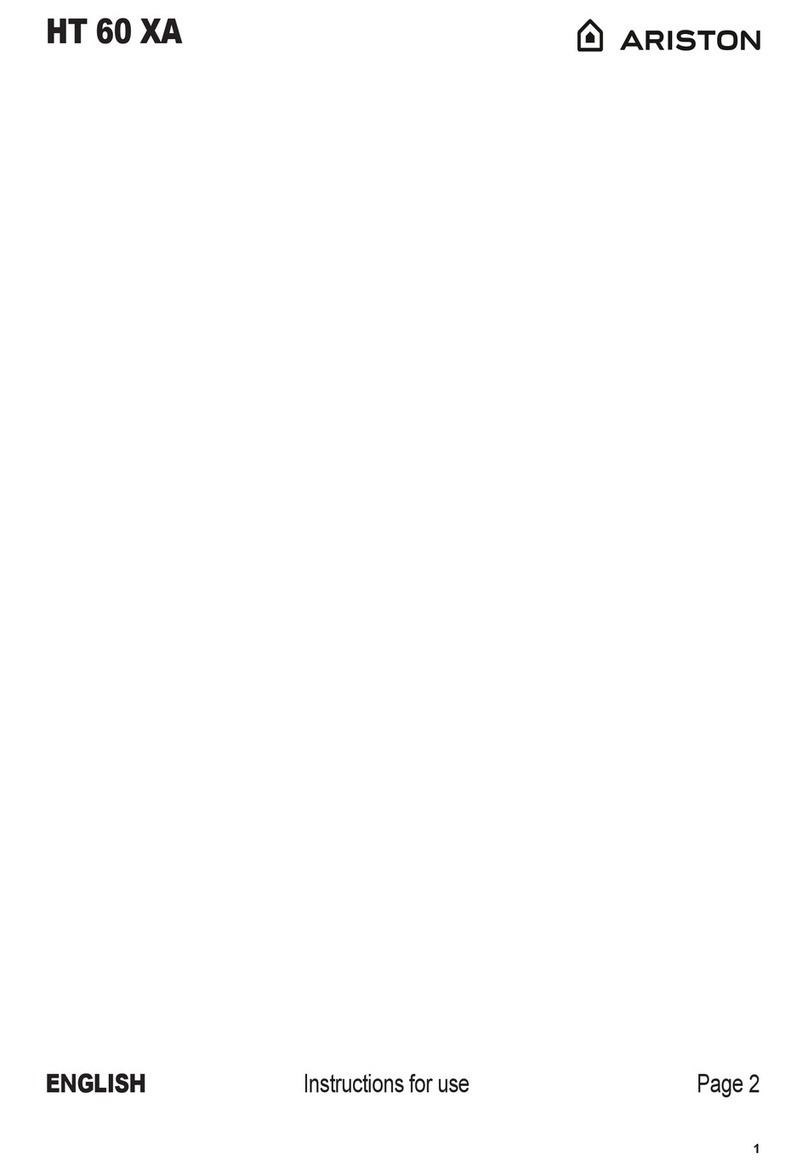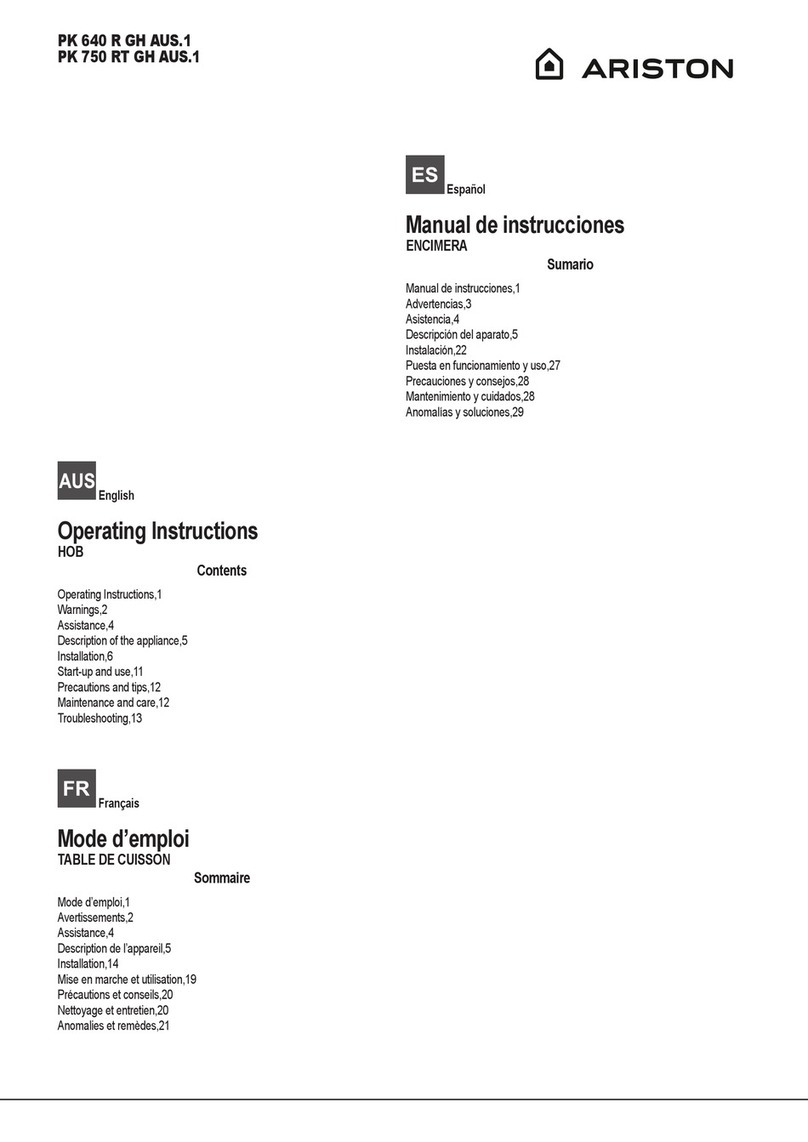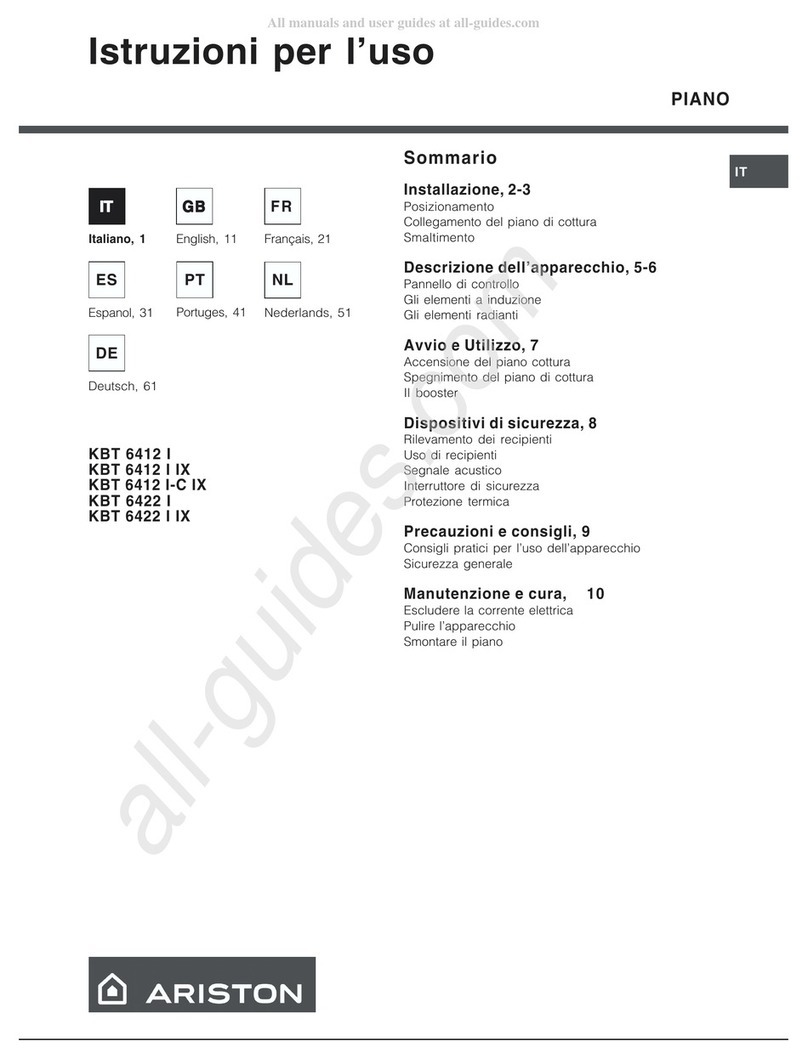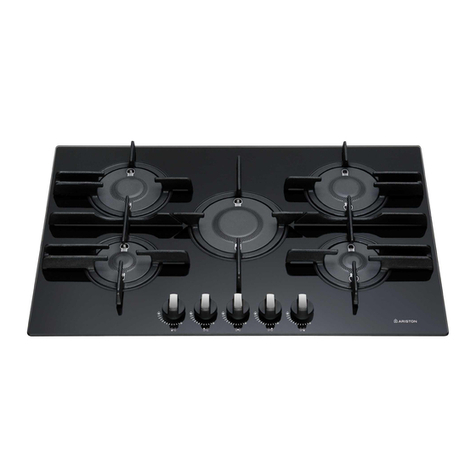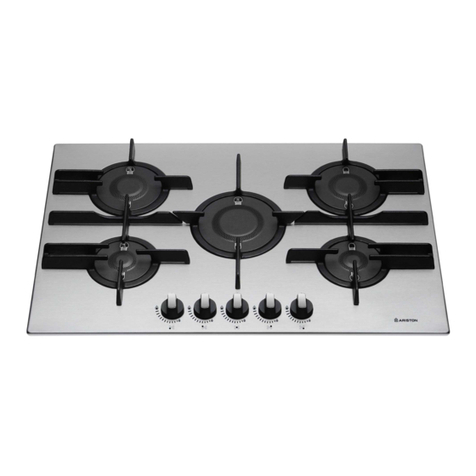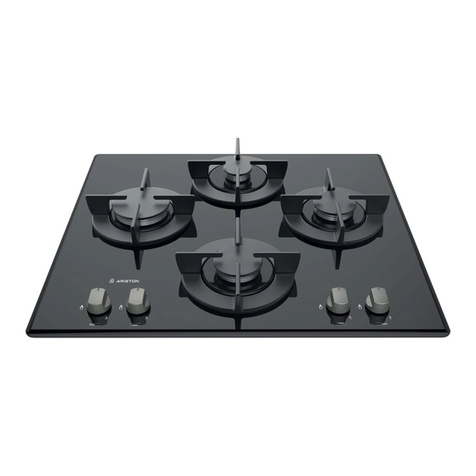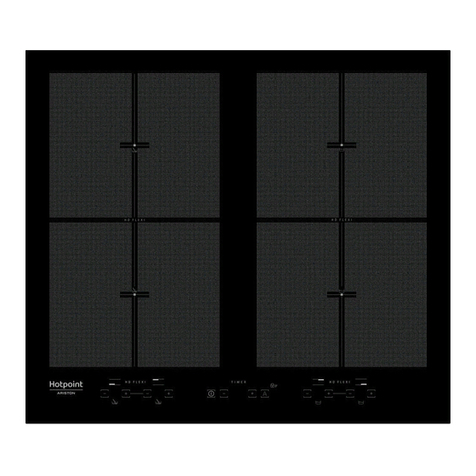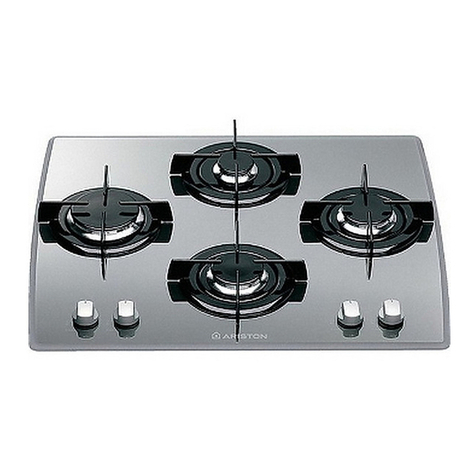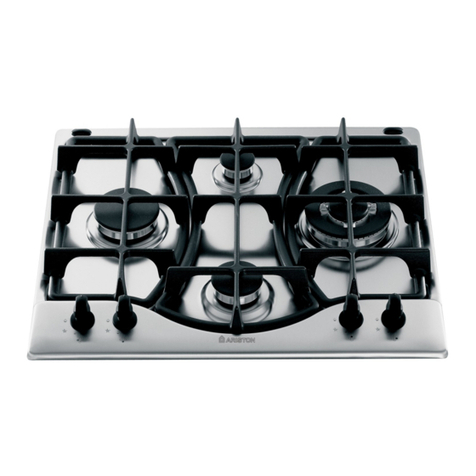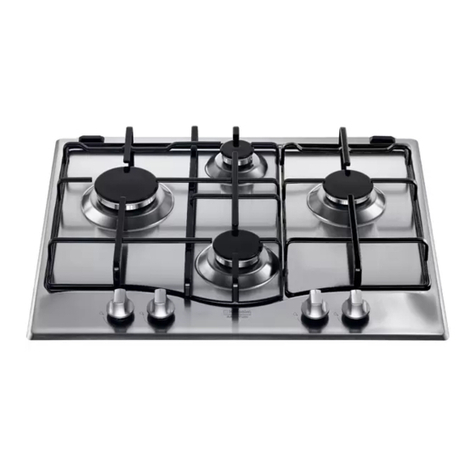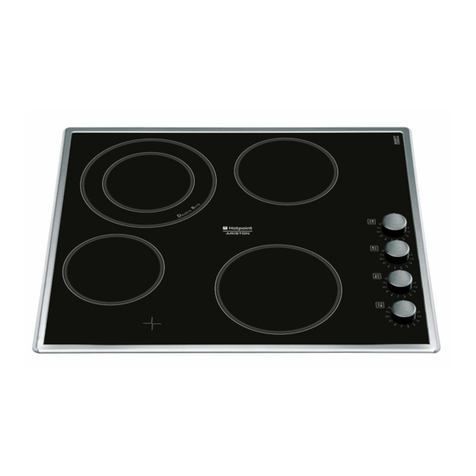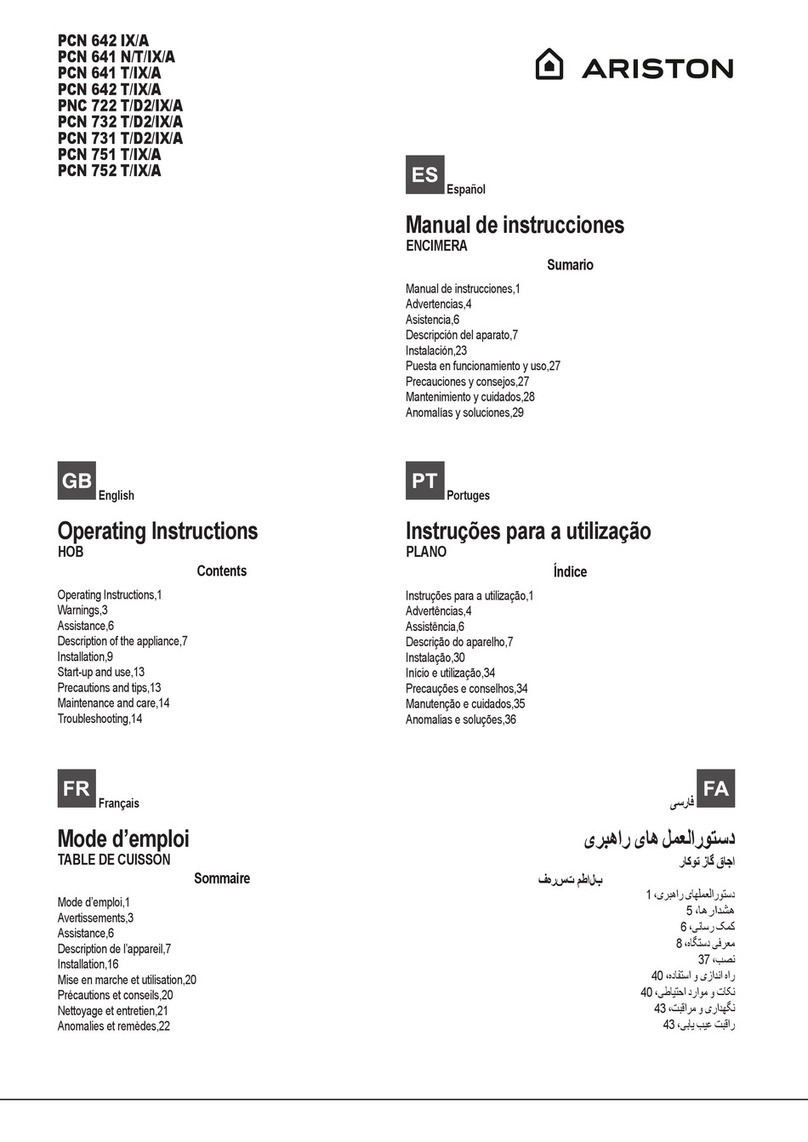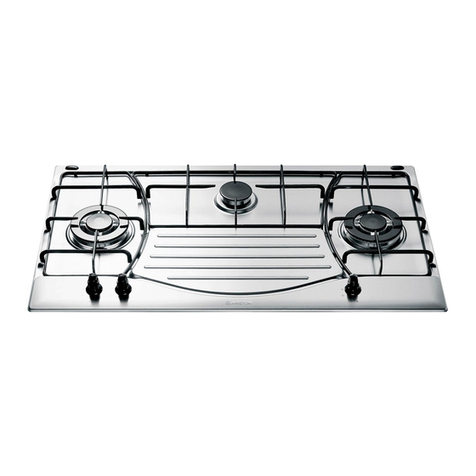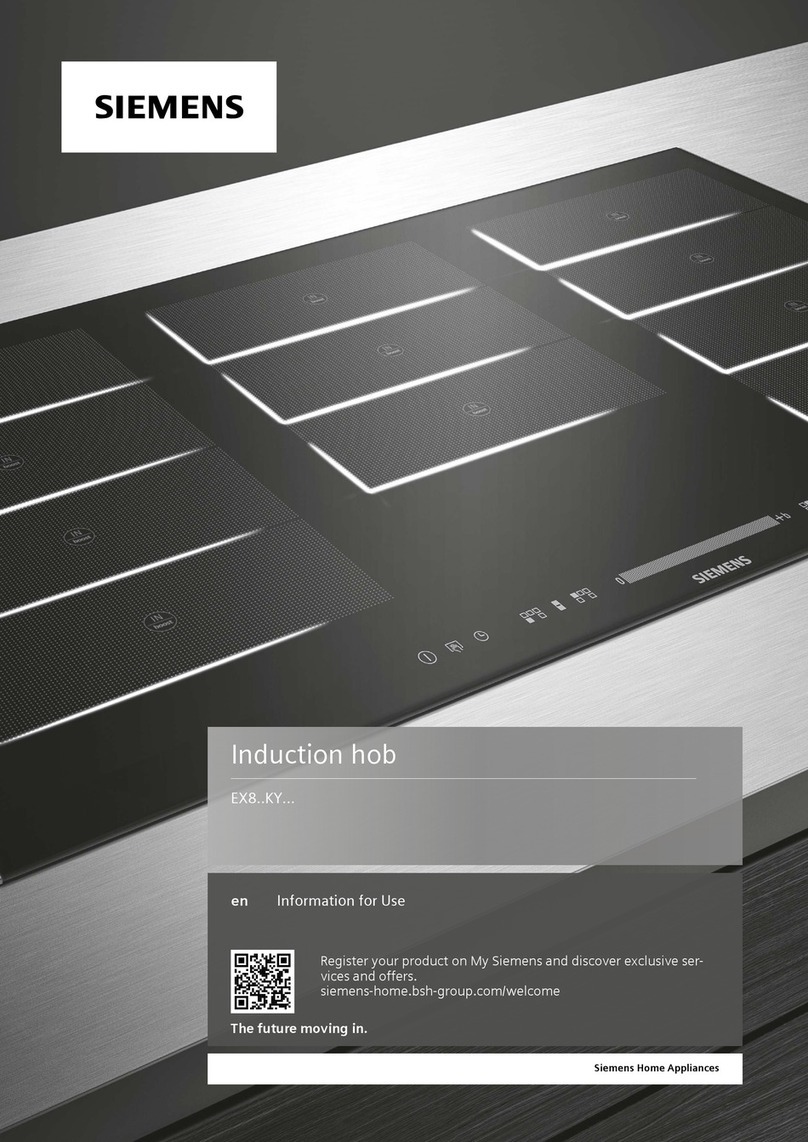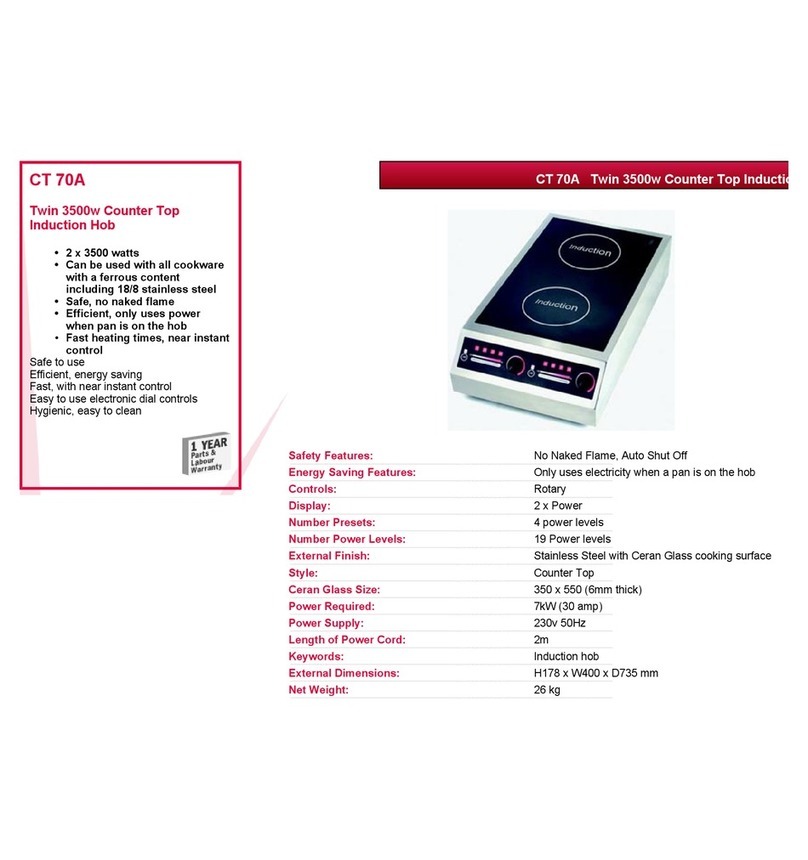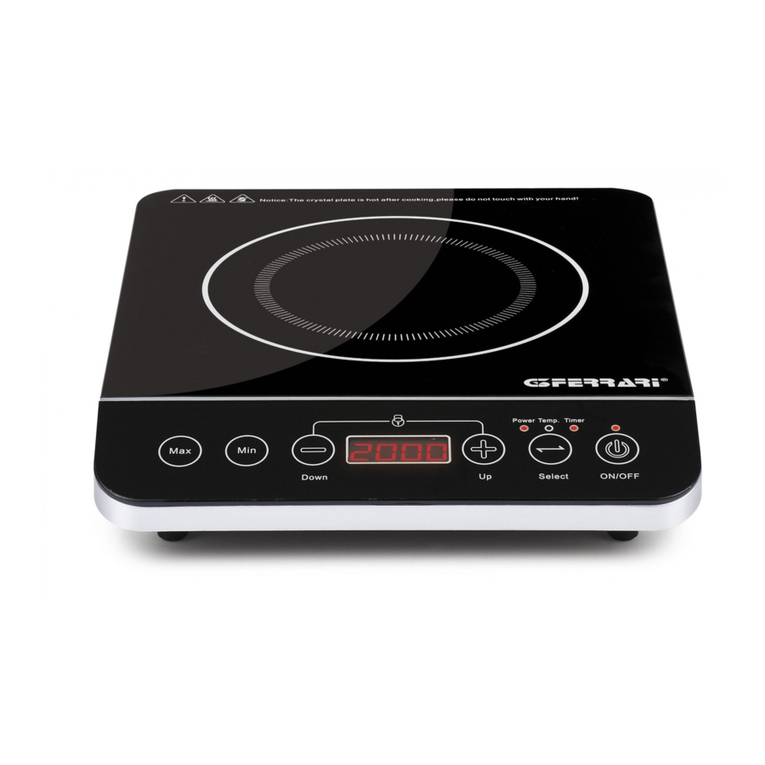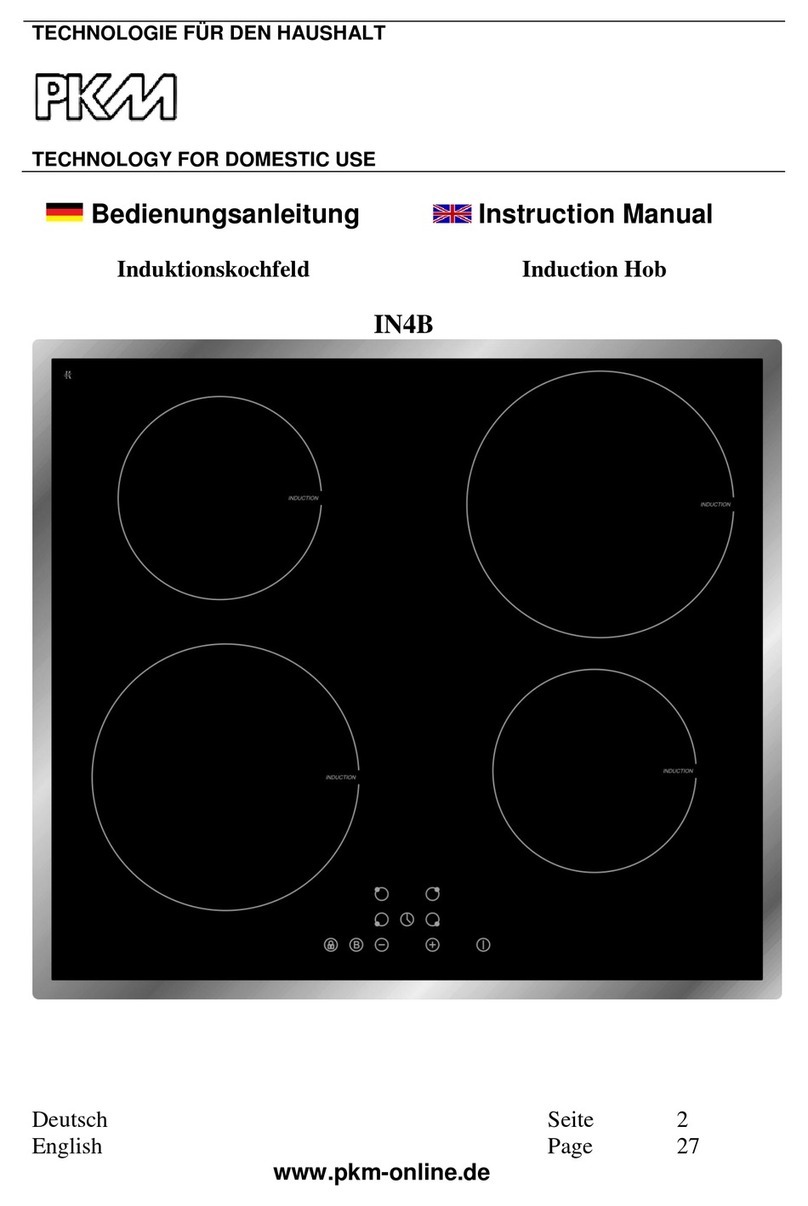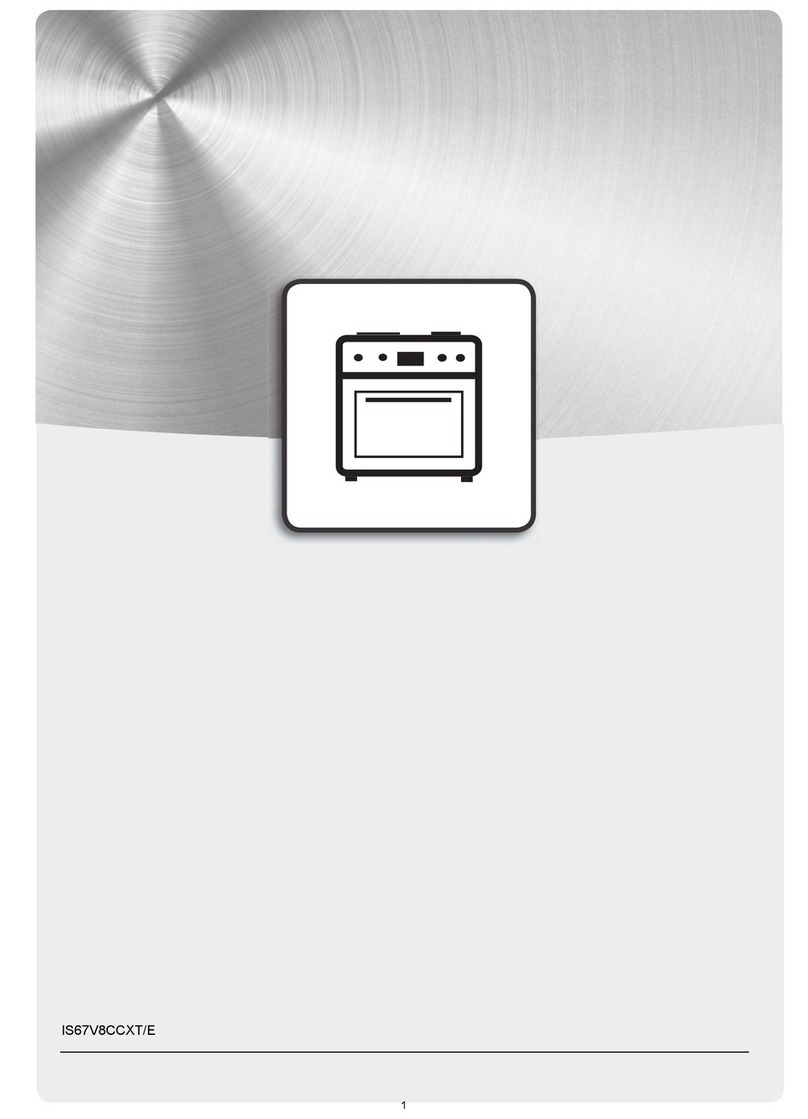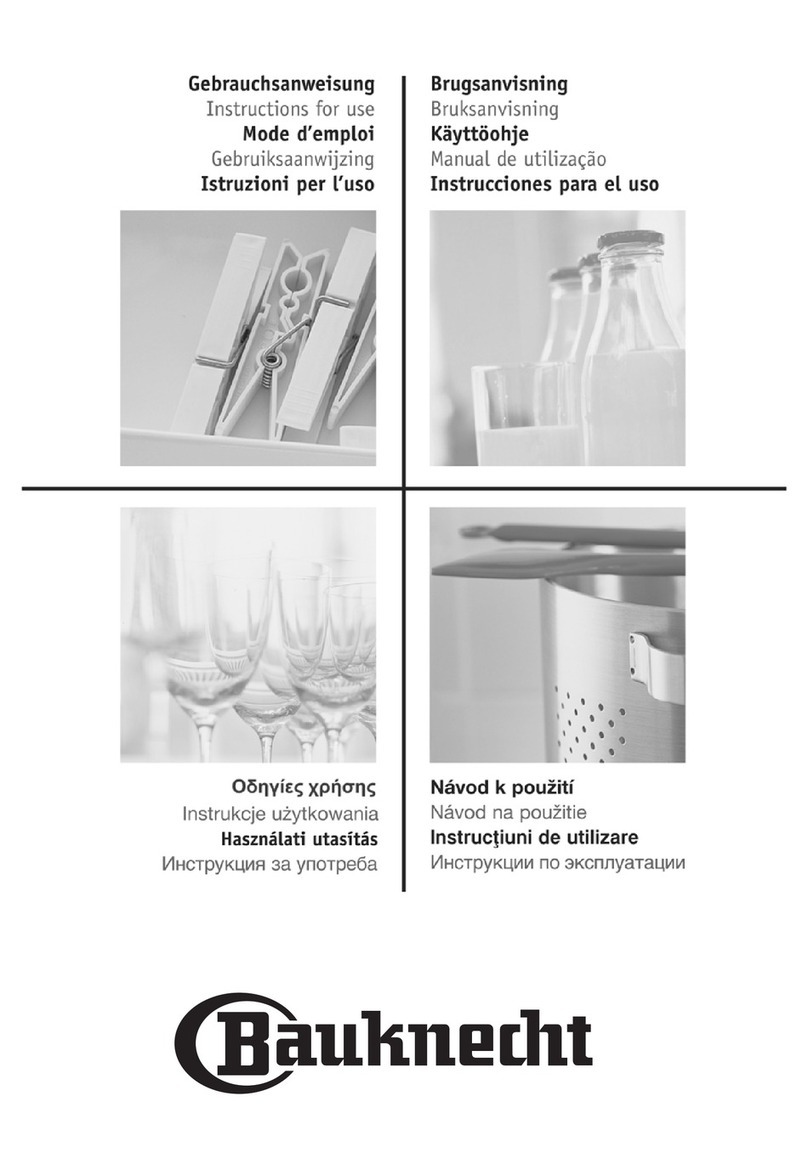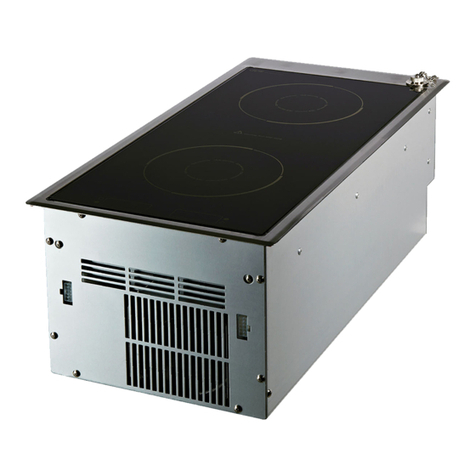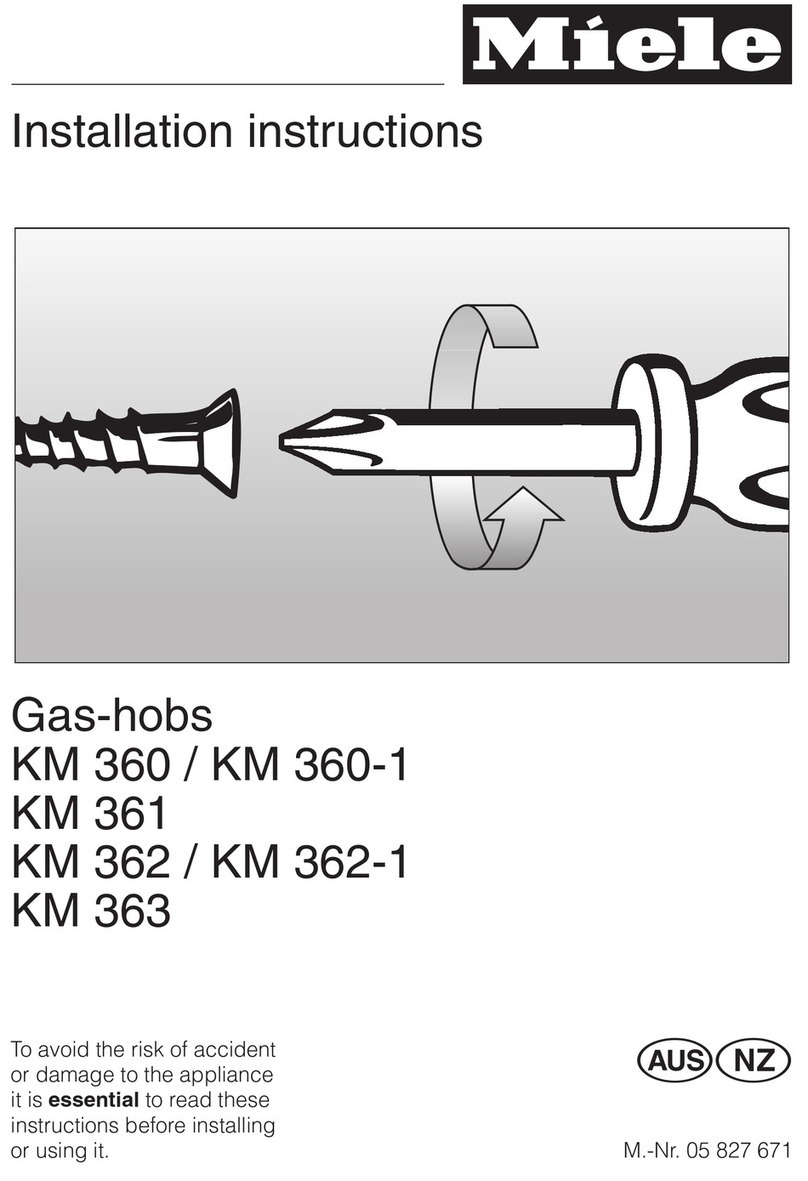
9
GB
Precautions and tips
This appliance has been designed and manufactured in
compliance with international safety standards. The
following warnings are pro ided for safety reasons and
must be read carefully.
This appliance conforms to the following European
Economic Community directi es:
- 2006/95/EEC dated 12/12/06 (Low Voltage) and
subsequent amendments;
- 2004/108/EEC dated 15/12/04 (Electromagnetic
Compatibility) and subsequent amendments;
- 93/68/EEC dated 22/07/93 and subsequent amendments.
-
1275/2008 stand-by/off mode.
General safety
Make sure that the air inlet behind the fan grille is ne er
obstructed. The built-in hob should, in fact, be pro ided
with suitable entilation for the cooling of the electronic
components used in the appliance.
We ad ise against the installation of an induction hob
abo e an under-the-counter refrigerator (heat) or abo e a
washing machine ( ibrations). In fact, there would be
insufficient space for the entilation of electronic
components.
The appliance was designed for domestic use inside the
home and is not intended for commercial or industrial
use.
The appliance must not be installed outdoors, e en in
co ered areas. It is extremely dangerous to lea e the
appliance exposed to rain and storms.
Do not touch the appliance when barefoot or with wet
or damp hands and feet.
The appliance must be used by adults only for the
preparation of food, in accordance with the instructions
pro ided in this booklet. Do not use the hob as a
worktop or chopping board.
The glass ceramic hob is resistant to mechanical
shocks, but it may crack (or e en break) if hit with a
sharp object such as a tool. If this happens,
disconnect the appliance from the electricity mains
immediately and contact a Ser ice Centre.
Ensure that power supply cables of other electrical
appliances do not come into contact with the hot parts
of the hob.
Remember that the cooking zones remain relati ely hot
for at least thirty minutes after they ha e been switched
off. An indicator light pro ides a warning when residual
heat is present (see Start-up and use).
Keep any object which could melt away from the hob,
for example plastic and aluminium objects, or products
with a high sugar content. Be especially careful when
using plastic film and aluminium foil or packaging: if
placed on surfaces which are still hot, they may cause
serious damage to the hob.
Always make sure that pan handles are turned towards
the centre of the hob in order to a oid accidental
burns.
When unplugging the appliance, always pull the plug
from the mains socket; do not pull on the cable.
Ne er perform any cleaning or maintenance work
without ha ing disconnected the appliance from the
electricity mains.
The appliance should not be operated by people
(including children) with reduced physical, sensory or
mental capacities, by inexperienced indi iduals or by
anyone who is not familiar with the product. These
indi iduals should, at the ery least, be super ised by
someone who assumes responsibility for their safety or
recei e preliminary instructions relating to the operation
of the appliance.
For the attention of wearers of pacemakers or
other active implants:
The hob complies with all current standards on
electromagnetic interference.
Your induction hob is therefore perfectly in keeping with
legal requirements (89/336/CEE directi es). It is
designed not to create interference on any other
electrical apparatus being used on condition that the
apparatus in question also complies with this
legislation. Your induction hob generates short-range
magnetic fields. To a oid any interference between
your induction hob and a pacemaker, the latter must be
designed to comply with rele ant regulations.
In this respect, we can only guarantee our own product
conformity. Please consult the pacemaker manufacturer
or your doctor concerning its conformity or any possible
incompatibility.
Do not let children play with the appliance.
Disposal
When disposing of packaging material: obser e local
legislation so that the packaging may be reused.
The European Directi e 2002/96/EC relating to Waste
Electrical and Electronic Equipment (WEEE) states that
household appliances should not be disposed of using
the normal solid urban waste cycle. Exhausted
appliances should be collected separately in order to
optimise the cost of re-using and recycling the materials
inside the machine, while pre enting potential damage
to the atmosphere and to public health. The crossed-
out dustbin is marked on all products to remind the
owner of their obligations regarding separated waste
collection.
For further information relating to the correct disposal of
exhausted household appliances, owners may contact
the public ser ice pro ided or their local dealer.
